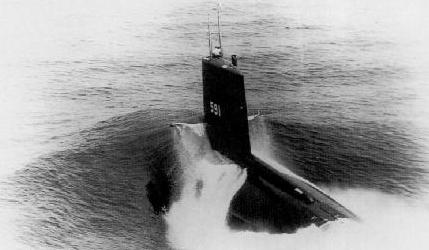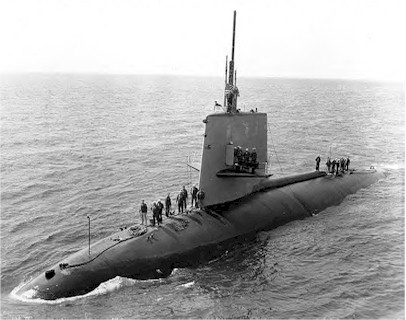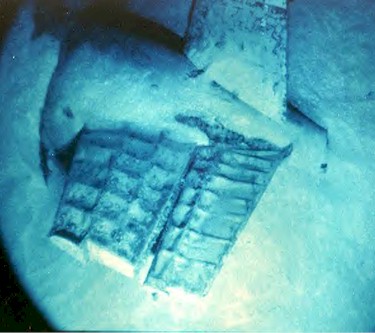John Arruda

Virginia

John Arruda was the second son and fifth born of Anibel and Mary Santos Arruda's seven children. He joined the Navy shortly after High School, his first assignment was the Great Lakes Training Center in Waukegan Illinois.

RECRUIT TRAINING CENTER, GREAT LAKES, ILUncle John attended Basic raining at the Great Lakes Navy Training Center. Great Lakes has been turning civilians into seamen and seamen into Sailors for more than 80 years. From its founding in 1911, the Center has maintained its position as the Navy's largest training facility. From World War I through the present, Naval Training Center, Great Lakes has trained and sent to the fleet more than three million new Sailors.
Theodore Roosevelt signed the bill authorizing the construction of the station and directed the Navy to make Great Lakes the biggest and the best Naval Training Station in the world. Rear Admiral Albert A. Ross raised the flag on the site July 1, 1905, and took possession of the land for the government. He was the station's first commander and Ross Field and Ross Auditorium on Mainside are named in his honor.
Six years later, in 1911, the station received its first trainee, Seaman Recruit Joseph W. Gregg. A small park at the Recruit Training Command today bears his name. Gregg is buried in the cemetery located near the Naval Hospital. President William H. Taft dedicated the station on October 28, 1911. Uncle John left Recruit training command and went over to the Navy Training Center side of Great Lakes.
SERVICE SCHOOL COMMAND Uncle John Attended ET class "A" School here early in the 1960's during the height of the Submarine Cold War build-up. SSC has a great history: At the beginning of World War I there were just three schools at the station: Signal/Radio School, Hospital Corps School and Musicians School. At the close of fighting there were 17, and five of them were aviation schools. In fact, at that time, Great Lakes was probably the world's largest aviation training facility.
Funds were scarce and early Great Lakes aviators often purchased their own planes. For practice, they would fly the mail route from Chicago to Great Lakes. Captain William Moffett built the aviation program here, and after the war he became the first Chief of Naval Aeronautics. Today, one of the Recruit Training Command camps bears his name
The Electronics Technician (ET) A school trains personnel to perform apprentice level maintenance tasks on electronic communications and radar equipment, and provides the requisite knowledge for entry into the Electronics Technician (ET) "C" Schools. The ET School Communications section lasts about 14 weeks and the Radar School about 13 weeks.After Completion of ET"A" school Uncle John attended Class "C" school which further intensified his training in electronics. He left after almost a year of schooling to report to his next assignment SUBSCHOOL, Groton CT for still more training.
SUBMARINE SCHOOL, GROTON, CT Uncle John Arrived here for more training thsi time the traiing would be specifically targeted towards Submarine duty.
When the first class of twenty four officers began studies for submarine duty in the summer of 1916, the submarine base in Groton, Connecticut was little more than a handful of buildings scattered across the area now known as Lower Base. By Christmas 1916, the twenty two graduates of the first submarine officers' course were heading out for assignments after spending six months in training on submarines, torpedoes, engineering and electricity.' Records are sketchy on the nature of much of that training-especially since the bulk of the early trainers were salvage material from decommissioned submarines. Within a year the submarine officers, and those who followed them through Naval Submarine School, were serving around the globe as the United States entered World War I.
Over eighty years after that first graduation, Naval Submarine School, Submarine Base, the U.S. Navy and the world have all undergone radical and profound change but the tradition as the center for submarine training excellence continues. From one building on Lower Base in 1916, Naval Submarine School has grown to the largest single tenant unit on Submarine Base, with over forty thousand Sailors graduating annually from over two hundred and thirty different courses. From an era when training aids were Mark I Attack trainers and a German-built trainer of unspecified history. These trainers are vital tools in providing realistic individual and team training for the submarine fleet. Naval Submarine School instruction included introduction, apprentice and basic skill level training; technical proficiency training and advanced team operator and team training in electronic and combat systems employment, navigation and damage control; and provide mid-career professional growth courses for both officers and enlisted Sailors. Naval Submarine School conducted refresher training of all Atlantic Fleet submarines completing construction or overhaul, pre-deployment and training ashore for all submarines of the Atlantic Fleet. After Uncle John finished his Submarine Training he later received orders for his first Sea Duty SAssignment the USS SHARK SSN-591 out of Norfolk Virginia.

displacement-3070 tons (surfaced), 3500 tons (submerged); length-251.8'; beam-31.8';speed-15k (surface), 29+k (submerged); test depth-700'; armament. 6-21"torpedoes fwd.; complement-9 officers - 76 enlisted men; class-"SKIPJACK"
Keel laid down by Newport News Shipbuilding & Drydock Co., Newport News, VA 24FEB58;
Launched: 16MAR60; Sponsored by Mrs. Louis Shane, Jr.;
Commissioned: 9FEB61 with LCdr John F. Fagan, Jr. in command;Decommissioned: 15DEC89;
Struck from the Navy List 11JUL90;
Disposal/Scrapped completed 28JUN96.
USS SHARK Uncle John Reported to the Shark as a new ETSN, The Shark was one of six new "SkipJack" Class Submarines that was designed form the keel up as a nuclear sub, rather than pieced together after thoughts from diesel boats.
After preliminary testing and fitting out, USS SHARK (SSN-591) sailed to the Caribbean in May for her shakedown cruise. The submarine returned to her building yard for post shakedown repairs and final acceptance by the Navy.
SHARK sailed for the Mediterranean and duty with the 6th Fleet on 12 August 1961. This was the first such deployment for a nuclear submarine, and SHARK was deployed until 14 November. On 29 January 1962, the submarine steamed to Bermuda for 2 weeks of type training. She was next deployed to the North Atlantic from 15 March to 23 May. During this period, SHARK paid a one-week visit to Portsmouth, England. On 25 August, she departed for another two months in the North Atlantic. On her return trip to Norfolk, she underwent an availability period that lasted until 7 January 1963.
SHARK participated in SUBFALLEX in the North Atlantic from 7 August to 24 October, with a week spent in Faslane, Scotland. The remainder of 1963 was either spent in port, in local operations, or conducting antisubmarine warfare exercises in the Caribbean.
On 22 March 1964, SHARK departed Norfolk to participate in SUBSPRINGEX and returned on 21 May. On 25 June 1964, she sailed to Charleston, SC, for her first shipyard overhaul which lasted until 7 June 1965. On 7 April 1965, at the shipyard, SHARK was presented the Navy Unit Commendation for meritorious service from 5 April to 9 May 1964, a period in which she "achieved results of great value and importance to the U.S. Navy in the field of antisubmarine warfare capabilities."
The submarine put to sea for sea trials on 7 June. One month later, she suffered damage to the forward oxygen system which necessitated additional repairs at Charleston. On 9 October, she passed her sea trials and sailed to Key West, Florida, for two weeks of torpedo tube tests and a wire-guided torpedo development project.
SHARK returned to Norfolk on 25 October 1965 and conducted type training, individual ship exercises, and antisubmarine warfare exercises until 8 January 1966. The ship then operated in the Caribbean until 7 February. She was there again for further trials in July and October.
SHARK stood out of Norfolk on 7 January 1967 for the North Atlantic and conducted special operations until 24 March. Two weeks of this period were spent at Holy Loch, Scotland. On 12 April, she was presented her second Navy Unit Commendation for operations in 1966 in which "SHARK contributed significantly to the knowledge of the U.S. Navy in the field of antisubmarine warfare." SHARK departed Norfolk on 16 May for Halifax, Nova Scotia, which was the first visit of a nuclear ship to a Canadian port. The submarine operated with Royal Canadian Navy ASW units before returning to her home port.
On 11 June 1967, SHARK prepared for her first refueling period at the Norfolk Naval Shipyard and did not put to sea again until March 1968. The remainder of 1968 and 1969 was spent performing local or special operations.
SHARK was in drydock at Norfolk from 1 January 1970 to 9 August 1971. The remainder of the year and 1972 was spent in refresher training and undergoing various trials along the east coast, with the exception of a deployment to the 6th Fleet from 31 May to 19 November 1972. In August of 1974, SHARK operated with the Atlantic Fleet from her home port in Norfolk.
SHARK was decommissioned 15 December 1989, struck from the Navy List 11 July 1990 and disposed of through SRP at Puget Sound Naval Shipyard on 28 June 1996.
SUBMARINE ESPIONAGE
***Under Construction*** For more than four decades, under the most stringent top secret classifications The United States sent tens of thousands of young men in cramped steel submarines on spy missions off the frozen coasts of the Soviet Union. Their job was to lurk beneath the surface and stay hidden. They would gather information about the enemy’s intentions and its abilities to wage war at sea. Submarines, were made for this task, they were perfect. Designed to prowl silently underwater watching and listening. Using silence, stealth, and most importantly secrecy submarines were used for countless spy missions and the tracking of soviet subs. Not just any subs but, most importantly tracking the “boomers”, the Soviet Ballistic submarines with their cargoes of death. They did this for so many years, and never once did their crews ever ask why. They did it because their country needed them to. During the time Uncle John was stationed onboard the SHARK several Cold war Submarine events took place under the water in the North Atlantic and the Artic Ocean......... More to come

USS SCORPION SSN-589 April 1968

USS SCORPION - SSN 589 During the time Uncle John was stationed in Norfolk, Virginia the Navy had a significant event abord the USS SCORPION SSN 589. SCORPION was lost on 22 May 1968 with 12 officers and 87 enlisted men -- one of the worst casualties in the Navy's history. Based on prior experience with such problems and an analysis of the SOSUS accoustic signature of the Scorpion loss, the Navy initially concluded that the most probable cause of the loss of the Scorpion was the launch of an inadvertently activated torpedo, which turned and struck the submarine. However, a six-month search eventually located the Scorpion's wreckage some 400 miles southwest of the Azores at a depth of over 10,000 ft.The subsequent investigation of the boat's wreckage on the ocean floor found no evidence of torpedo damage. A six-month expedition in 1969 by the submersible Trieste II found no direct evidence to support the theory that the Scorpion was destroyed by a torpedo. While some portions of the Scorpion's hull were never found, the wreckage that was examined did not exhibit the conditions expected from a torpedo explosion.

Crew working the lines April 1968
In 1970 a Navy panel completed a classified report that dismissed the primary Court of Inquiry's conclusion. Instead of an accidental torpedo strike, the new panel suggested a mechanical failure caused an irreparable leak that flooded the submarine. That report said the bulk of the evidence suggested an internal explosion in the sub's massive electrical battery caused the sub to flood and sink. The large number of SOSUS accoustic signals detected from the loss of the Scorpion was characteristic of a submarine going through deep depths after experiencing substantial flooding, rather than an intact submarine passing through collapse depth.This would suggest a Trash Disposal Unit failure like the incident that occured on the USS SHARK. At the time of its loss, the boat had a history of unresolved maintenance problems, poorly functioning safety systems, and had received an extremely abbreviated overhaul prior to its final mission.

Bow section 1968

Tail section 1995
HOME









